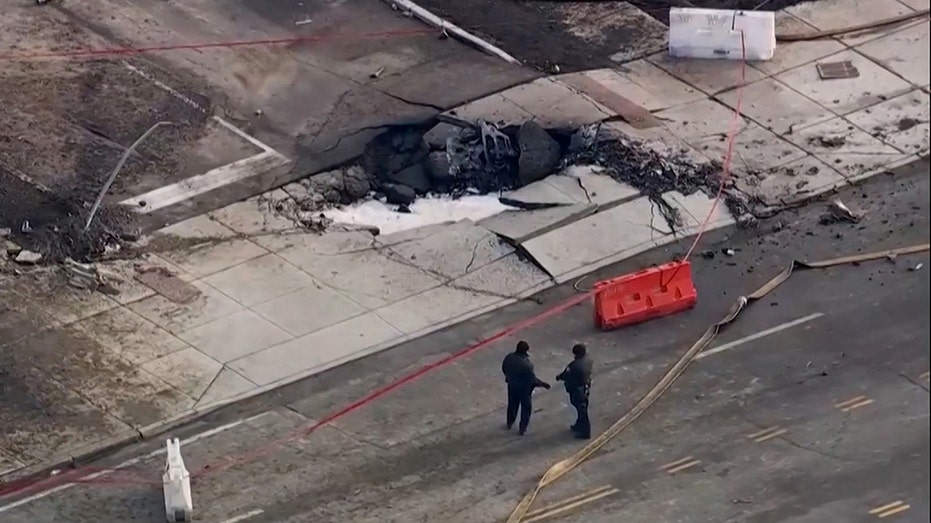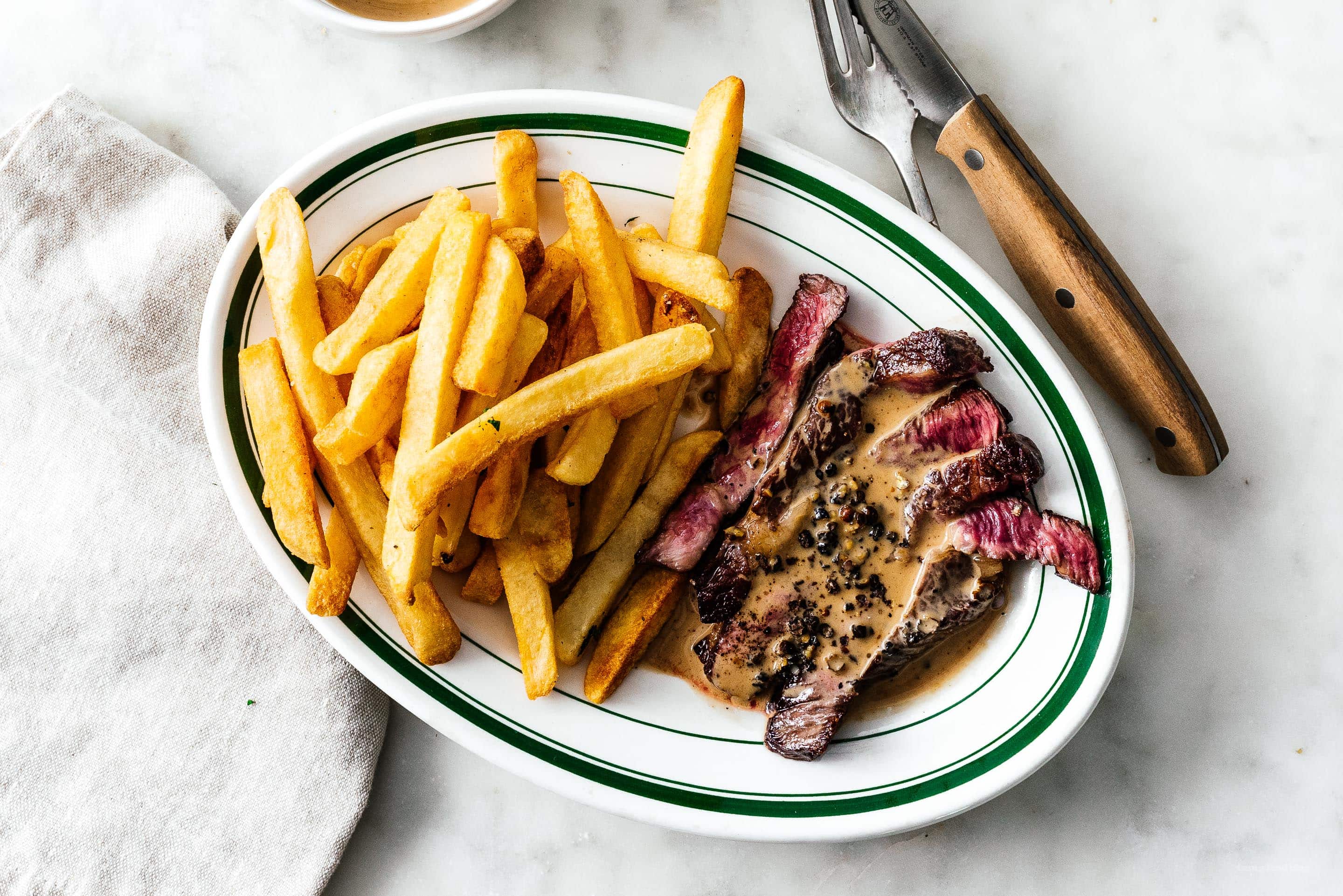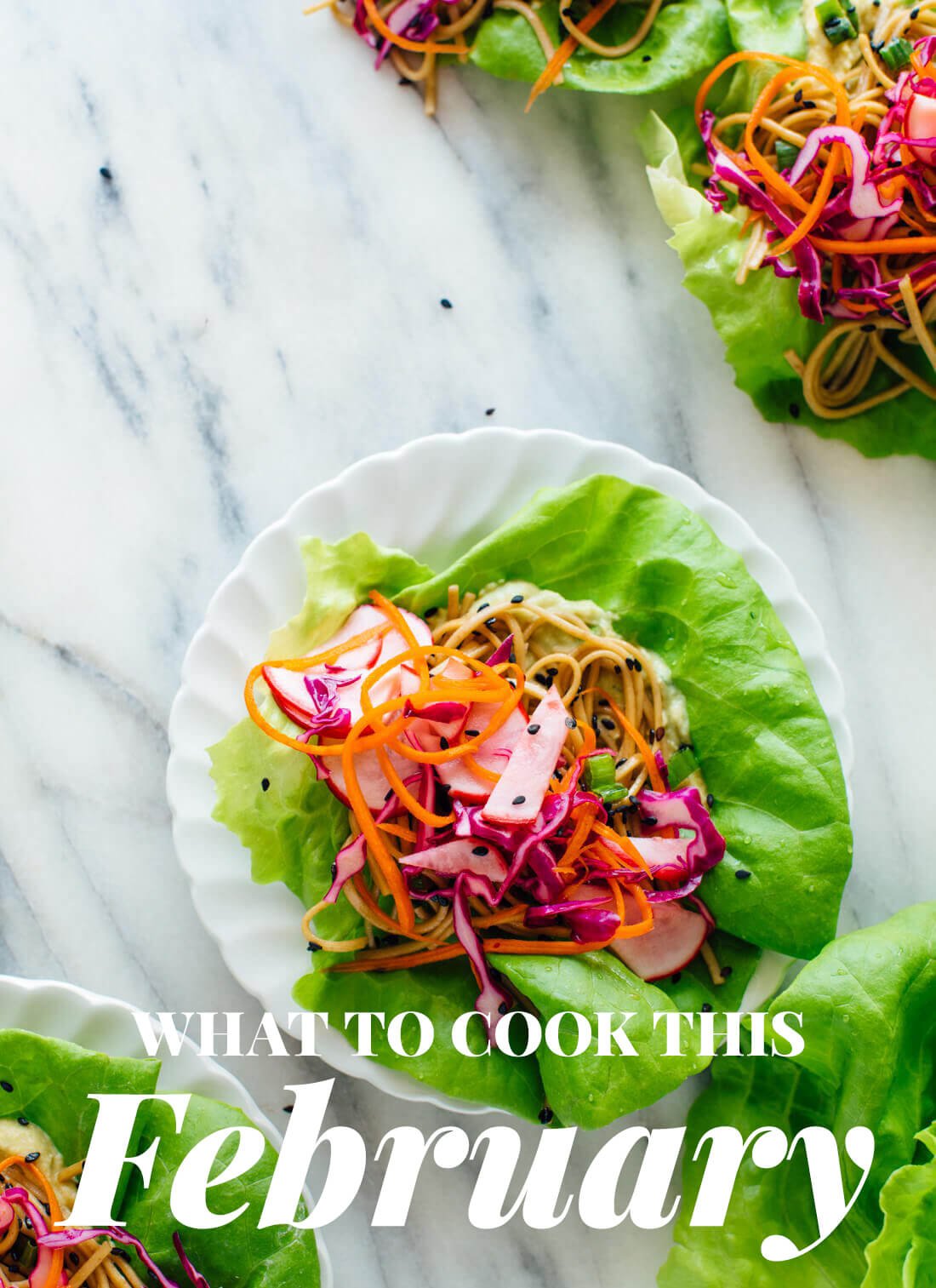The Crispy, Cheesy Buffalo Chicken Snack I'm Making for the Super Bowl
Filled with a spicy Buffalo chicken and mozzarella mixture and pan-fried in ghee until crisp, these parathas are delightfully cheesy.


I grew up in Bengaluru, India, with very South Indian parents: Since they prioritized eating home-cooked meals, we rarely dined out. When we did eat out it was at a small shop called Paratha Plaza. Since rice is typically the go-to starch in the South Indian diet, breads like rotis and parathas aren’t eaten often—so the parathas from Paratha Plaza were a once-in-a-blue-moon delicacy. I have vivid memories of the buttery, crisp, Amul cheese-filled parathas.
These cheesy, flaky breads were one of the many types of parathas that this tiny shop sold. The parathas were served with achaar (Indian pickle), yogurt, and whole green chiles, and every time we went, I slowly savored each bite. When I moved to the US four years ago, I tried warm Buffalo chicken dip for the first time. The dip was as zingy as achaar, and its cheesiness instantly reminded me of the parathas I ate growing up. I immediately set out to combine the two, and ended up with these Buffalo chicken-filled parathas that deliver the best of both worlds.
For extra meltiness, my recipe calls for mozzarella cheese instead of the famed Amul cheese, a household staple in India that’s typically used to fill parathas. This is not a paratha you will find on a menu at any Indian restaurant—and definitely not at Paratha Plaza— but I’d like to think it is delicious enough to be sold at one.
Key Techniques for Making Parathas
Making parathas is very similar to making dinner rolls or bierocks, a popular bun in the Midwest: You divide the dough into equal portions, then roll each into a round ball before baking them. Unlike dinner rolls, however, it’s not quite as important to shape the dough into a perfect sphere, since you’ll be filling it and rolling it flat before cooking. And, unlike rolls or bierocks, the individual parathas are cooked on a griddle or in a cast iron skillet, not in the oven. Rolling the parathas can also be tricky, but my tips and tricks below will help you make stellar parathas.
Reach for atta. Atta, a type of finely milled whole-wheat flour from India that's typically ground in stone mills called chakki, can be found at any Indian grocery store or online. Atta is traditionally used to make stuffed parathas, and has a high protein content that allows just the right amount of gluten to form in the paratha dough. . If you can’t find atta, you can use two parts whole-wheat flour to one part all-purpose flour to create a blend with a similar texture.
Shred the chicken. For parathas that won’t tear during the rolling and cooking process, it’s crucial to shred the chicken as finely as possible. I recommend using a stand mixer or hand mixer fitted with a paddle, which makes light work of shredding the chicken. If you don’t have an electric mixer, though, you can use two forks or your hands, and finely chop any large pieces. The finer you can get the shreds of chicken, the easier and quicker the rolling out process will be.
Pleat and seal the dough well. After placing the filling in the center of the rolled-out circle of dough, gather the edges over the filling towards the center of the dough, pleating and sealing as you rotate it until all the dough is cinched over the filling. Gently press down so the filling evenly spreads out, with no gaps between the filling and dough on the sides. This method is very similar to the one used to prepare Chinese xiaolongbao or Midwestern bierocks.
Roll from the center towards the edges. Rolling from the center towards the edges allows for the filling to be evenly distributed around the paratha so you get a taste of the filling in every bite. Gently roll out the dough, rotating as needed, until your paratha is a nice round. Some filling may ooze out, but that’s okay: It will just create delicious crispy bits on your paratha.
The thinner the better. For the crispiest parathas, roll your dough as thinly as you can. Below, I recommend rolling each paratha to nine inches, which ensures they’ll cook up nice and crisp.
How to Serve Parathas
I like to enjoy my parathas with Indian pickles (called “achaar” in Hindi or “uppinkai” in Kannada), which are made with fruits and vegetables like raw mango or carrots, as well as whole milk yogurt called “dahi.” They’re great accompaniments to these Buffalo chicken cheese parathas, but serving them with ranch dressing is also just as delicious.
In a medium bowl, add atta. Make a well in the center of the flour. Pour salt and vegetable oil into the well. Slowly pour lukewarm water into the well. Gradually incorporate flour and salt into the oil and water until a shaggy dough forms. (If dough is too dry, add water, 1 tablespoon at a time, until it forms a shaggy dough.) Knead until a smooth dough forms, about 3 minutes; it should be soft and pillowy. Transfer the dough to a zip-top bag, seal, and let rest at room temperature for 30 minutes.
Using your hands or two forks, finely shred chicken breasts into 1/4-inch pieces. Alternatively, you can use a stand or a hand mixer fitted with the paddle attachment to shred chicken breasts: Place chicken breasts in a stand mixer bowl or large bowl, then paddle until finely shredded, about 1 minute. (Smaller pieces of chicken prevent the paratha from tearing through the dough when rolling.)
In a medium bowl, whisk cream cheese, Buffalo sauce, and garlic powder until smooth. Add mozzarella and shredded chicken breasts and, using a flexible spatula, fold until mixture is uniform.
On a lightly floured surface, roll and shape dough out into a 12 inch–long log about 2 inches wide. Using a bench scraper or sharp knife, portion dough into 6 pieces, each weighing about 83g or 3 ounces. Cup each piece of dough in your hand and, quickly gliding the dough in a circular motion, roll dough until it forms a tight ball. Cover dough ball with a damp towel and repeat with remaining dough.
Working with 1 dough ball at time, use a rolling pin to shape into a 6-inch round, rolling from the center outward and lightly increasing pressure toward the edges so edges are slightly thinner than the middle. (Dough should be soft and pliant; if it recoils while rolling, let it rest for 5 minutes before continuing.) Place 1/2 cup Buffalo chicken mixture (about 4 1/4 ounces; 120g) in a rounded mound in the center, leaving a 1-inch border around the edges.
Gently bring edges of dough over filling; pleat edges of dough repeatedly, pinching the edge closed after each pleat until the entire paratha is sealed in a cinched purse shape. Pinch and twist top to seal, gently pressing down the top to flatten slightly.
On a lightly floured surface, roll out stuffed dough into a 9-inch circle.
Repeat with remaining dough and filling. Stack uncooked parathas on a large plate dusting well with atta or all-purpose flour in between each to prevent them from sticking to one another.
Heat a griddle or 12-inch cast iron skillet over medium heat; a drop of water should evaporate immediately when placed in the pan. Place 1 paratha onto griddle or skillet until it begins to puff, about 1 minute. Flip the paratha and, using a pastry brush, spread 1 teaspoon ghee on top. Cook for 1 minute more, flip, then brush other side of paratha with 1 teaspoon ghee. Cook for 1 minute more per side before transferring to a plate. Repeat with remaining parathas. Serve warm with ranch dressing.
Special Equipment
Zip-top bag, rolling pin, griddle or cast iron skillet, pastry brush
Notes
Atta, a type of finely milled whole-wheat flour from India that's typically ground in stone mills called chakki, can easily be found at Indian grocery stores and can also be purchased online. If you can’t find atta, you can use two parts whole-wheat flour to one part all-purpose flour to create a blend with a similar texture.
Make-Ahead and Storage
The paratha dough and filling can be made up to 2 days in advance and refrigerated. Stuffed parathas should not be made ahead of time and refrigerated, as the filling can make the dough too moist.
Stuffed and rolled out parathas can be laid out on a parchment-lined baking sheet and frozen; when completely frozen, transfer parathas to a zip-top bag. Frozen parathas can be frozen in an airtight zip-top bag for up to 3 months. Alternatively, stuffed parathas can also be stacked and frozen; keep parathas separate with a layer of parchment paper between each. Frozen parathas can be cooked directly on the pan without thawing.









































![United Lounge Hack: Flyers Are Cooking Up Secret Breakfast Sandwiches—Would You Try It? [Roundup]](https://viewfromthewing.com/wp-content/uploads/2025/01/united-mcmuffin.webp?#)
































